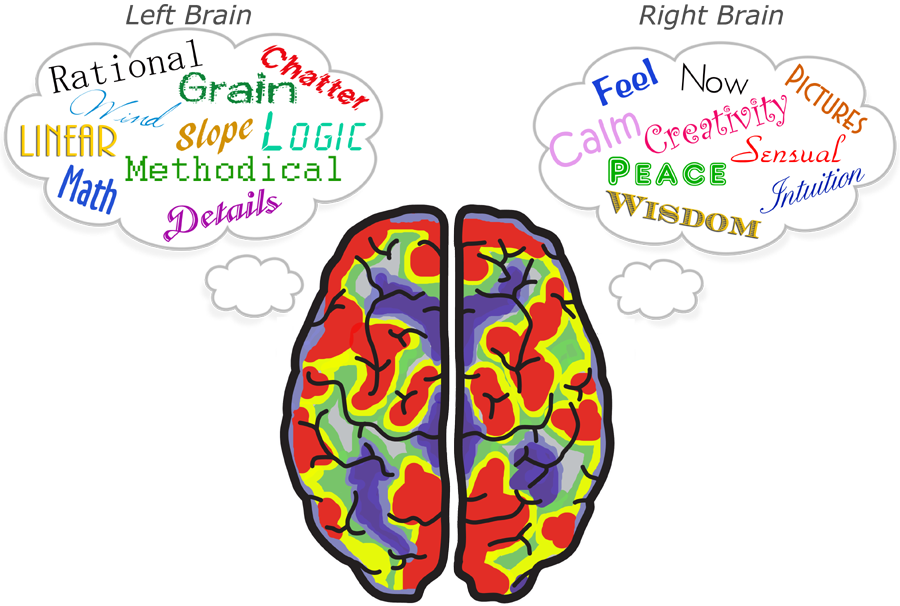Putting Tips
Putt With Both Sides of Your Brain™ – what does that mean?
This is a philosophy that will help you sink more putts. As you can see, your brain is divided into two very distinct halves, each with very different functions in how you think and process information.
What does the left side of my brain do?
The left side of your brain is where all the critical thinking takes place: it’s the side that’s evaluating the course conditions, the lie of your golf ball, the slope of the green. It’s the side that’s checking your stance and posture, your back stroke, follow through, etc., etc. This is critical to having a good stroke and performing well and shooting low scores. However, it can also be a very noisy and distracting place if it’s not well-balanced by the right side of your brain.
What does the right side of my brain do?
The right side of your brain is the calm, peaceful, and creative side. It’s the warm bath to the left side’s icy analysis. Have you had rounds where you scored well but felt like you were just along for the ride, where you didn’t seem to have a swing thought or a care in the world? If so, it’s likely that you were right-brain dominant during that round, relying on muscle memory while staying calm and in the moment. That’s being in the zone.
So what does this have to do with putting better?
To putt with both sides of your brain you’ll begin the putting process with the left side of your brain and then you’ll transition to the right side when you’re ready to roll the ball:
1. Left Side of Your Brain: As you approach the putting surface, note the overall slope of the green, the slope around your ball and the slope around the hole. Note the grain – are you putting into the grain, across the grain or with the grain? Will wind affect the path of your putt? Take your preferred stance for a practice stroke: putter centered in your stance, weight balanced on heels and toes, eyes over the center of the putter, arms hanging comfortably. What speed is required to sink this putt? Take a practice stroke with the proper back stroke and forward stroke. Was that the correct amount? No? Try again until it’s exactly right – you want your practice stroke to be an exact prelude to your actual putt. Step into the golf ball and take your proper stance.
2. Right Side of Your Brain: This is where you rely on your analysis of the green and all the putting practice you’ve put in. Get calm and quiet your mind. Relax the muscles in your shoulders, neck and, in particular, your face. Depending on your initial state, you might feel a “rush” of calm enter your jaw. It should feel relaxed and comfortable – and your mouth might even water a bit because of this. That’s normal and a good sign.
This is where the intuitive nature of the alignment system comes into play – it allows you to comfortably see and sense the alignment of the putter face using your right brain rather than struggling to make sure it’s correct with your left brain. Sense it. Feel it. Roll the ball.
Take another look at the hole but don’t think “line” or “speed” or “stroke” – simply visualize the ball rolling to the hole. Just let it go and make your smooth, balanced stroke. Finally, your left brain will want to sneak a peek at the ball immediately as it leaves the putter face. That need to look is simply anxiety about making the putt. Stay in your right brain and trust that you’ve made a good stroke. Not until the ball is nearly to the hole should you turn your head to see your golf ball. Better yet, just wait for the sound of the ball rattling at the bottom of the cup.
Welcome to the zone.

